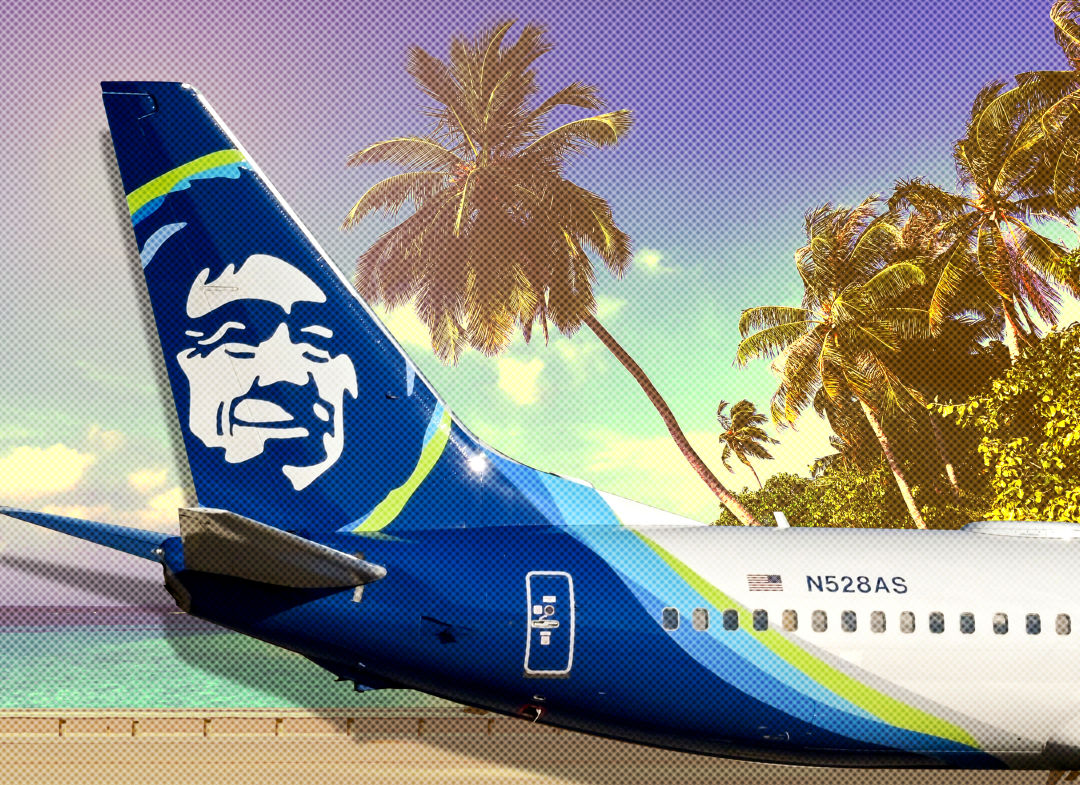Alaska Airlines Goes Tropical

When Alaska Airlines starts its newest nonstop from Los Angeles to Guatemala City, the man in a fur-lined hood who adorns the tail fin on its planes will be sweating into his third new tropical destination in less than two years. As Alaska expands south of the border, into the Bahamas and Central America, its logo (thought to be based on an Alaska Native) has never seemed less apt.
Though now headquartered in Seattle, Alaska Airlines was fittingly born in the 49th state—just a few decades before Alaska actually became a state. Two small bush airways, flying cargo and people at a time when fur trappers still worked the north, merged together in the 1930s. But it wasn't long after it adopted the name Alaska Airlines that it shed its provincial scope; the airways flew charter flights in the Berlin Airlift in 1948 and in a mass airlift of Jews from Yemen to Israel in 1949. Eventually moving its headquarters to Seattle, its first out-of-Alaska destination, Alaska Airlines counted scheduled routes to Russia and Mexico as early as the the 1980s.
Routes to Hawaii launched about 15 years ago, and the airline has since become a link to tropical destinations from Alaska and Washington. Even from its Seattle base, the focus has never strayed too far from the state of Alaska; an annual PFD sale occurs in the fall to coincide with when Alaskan residents receive their Permanent Fund Dividend from the state.
Still, the airline has doubled in size in the last decade, largely across the lower 48. Today Alaska flies nonstop from Seattle to places like Raleigh, El Paso, and Milwaukee. This year, the new Nassau, Bahamas, route marks the 101st nonstop destination out of Sea-Tac.
"People think of us as a smaller carrier," says Kirsten Amrine, vice president of revenue management and network planning, "but we're the fifth largest airline in the U.S. We're quite big in the grand scheme." All those new tropical destinations, she says, appeal to the active, outdoorsy personality of Seattle fliers—mountain biking in Guatemala, for example, or scuba diving in Belize.
The Bahamas, says Amrine, appeal to West Coasters who've tired of Hawai'i and Mexico. Hawai'i in particular has encountered issues with over tourism in recent years; the state of Hawai'i has turned from marketing itself to tourists to trying to stem the tide, and measures hit the state legislature this year to reshape the Hawai'i Tourism Authority. So while it's hard to shrug at the famously stunning Hawaiian Islands, new beach destinations could be appealing.
Nassau flights start December 15 and run through April, making three trips a week; it will be the airline's longest route, just a few miles more than its nonstop from Anchorage to Hawai'i. Whether Seattleites will hit the Nassau beaches for novelty or out of price and crowd sensitivity is unclear.
Even when we're not at the airport, Alaska Airlines makes itself known across Seattle. Flip through the credit cards rung up at any local bar and you'll likely spot more than a few Alaska-branded ones. The University of Washington basketball team plays in the Alaska Airlines Arena at Hec Edmundson Pavilion and the football team plays on the Alaska Airlines Field at Husky Stadium. Its name is plastered across soccer jerseys...when Portland teams are in town.
And, of course, it dominates on the tarmac; of the 33 airlines that take off at Seattle-Tacoma International Airport, Alaska carries more than 54 percent of the passengers who board there. If it doesn't feel like the airline is expanding our access to its namesake state, that might be because there are already nonstops to five Alaska cities from Sea-Tac.
To Amrine, the airline is broader than the actual state for which it is named. "We have that West Coast identity," she says. She notes that future expansion will depend on the success of these new routes, but she expects them to do well. After less than two years, the new Belize nonstop is among the company's most popular, she says. "We're about bringing the West Coast to the rest of the United States rather than becoming some generic national brand." And, apparently, to Guatemala, too.




